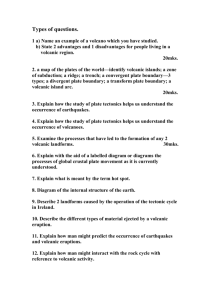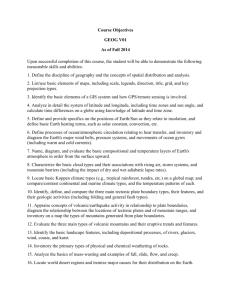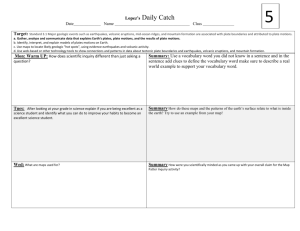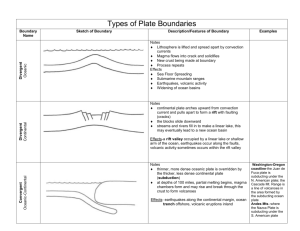File
advertisement
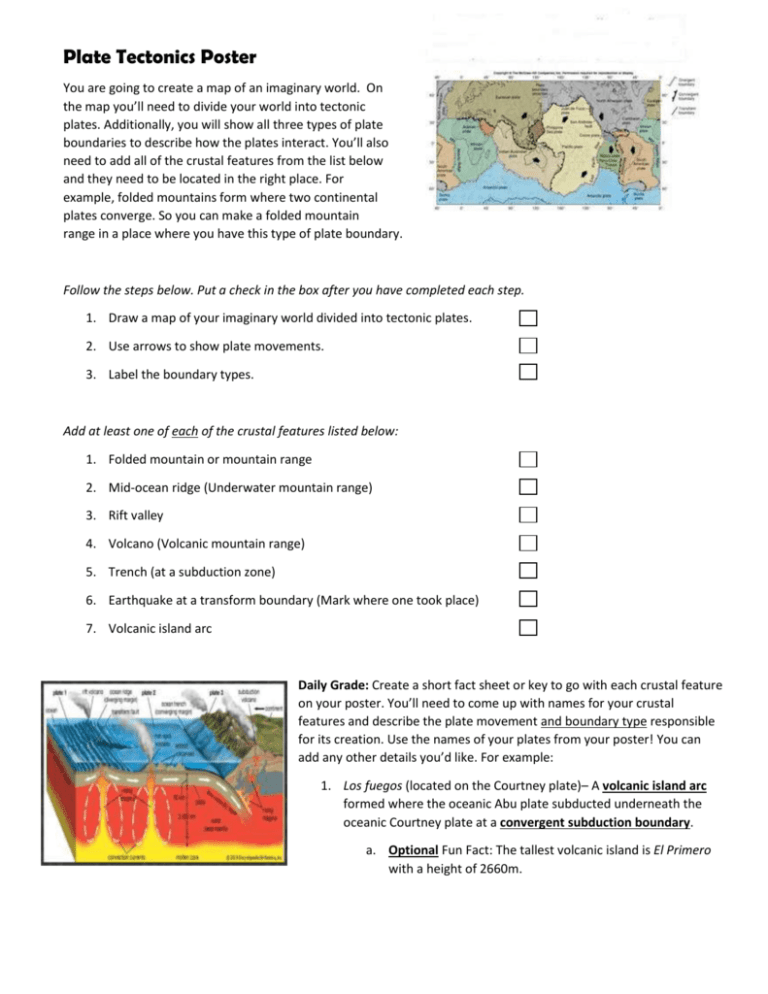
Plate Tectonics Poster You are going to create a map of an imaginary world. On the map you’ll need to divide your world into tectonic plates. Additionally, you will show all three types of plate boundaries to describe how the plates interact. You’ll also need to add all of the crustal features from the list below and they need to be located in the right place. For example, folded mountains form where two continental plates converge. So you can make a folded mountain range in a place where you have this type of plate boundary. Follow the steps below. Put a check in the box after you have completed each step. 1. Draw a map of your imaginary world divided into tectonic plates. 2. Use arrows to show plate movements. 3. Label the boundary types. Add at least one of each of the crustal features listed below: 1. Folded mountain or mountain range 2. Mid-ocean ridge (Underwater mountain range) 3. Rift valley 4. Volcano (Volcanic mountain range) 5. Trench (at a subduction zone) 6. Earthquake at a transform boundary (Mark where one took place) 7. Volcanic island arc Daily Grade: Create a short fact sheet or key to go with each crustal feature on your poster. You’ll need to come up with names for your crustal features and describe the plate movement and boundary type responsible for its creation. Use the names of your plates from your poster! You can add any other details you’d like. For example: 1. Los fuegos (located on the Courtney plate)– A volcanic island arc formed where the oceanic Abu plate subducted underneath the oceanic Courtney plate at a convergent subduction boundary. a. Optional Fun Fact: The tallest volcanic island is El Primero with a height of 2660m. Plate Tectonics Poster Fact Sheet *You may type this or write it out on your own paper if you prefer. You may also add fun facts about your crustal features. Crustal Feature Ex) Volcanic Island Arc Los Fuegos Island Arc (located on the Courtney plate) Fold Mountain Range Mid-Ocean Ridge Rift Valley Volcano (Volcanic Mountain Range) Oceanic Trench Earthquake and Fault Volcanic Island Arc Description of Plate Movement that formed your crustal feature When pushed together, the older oceanic Abu plate slid underneath the younger oceanic Courtney plate. Type of Boundary Convergent Subduction Boundary




